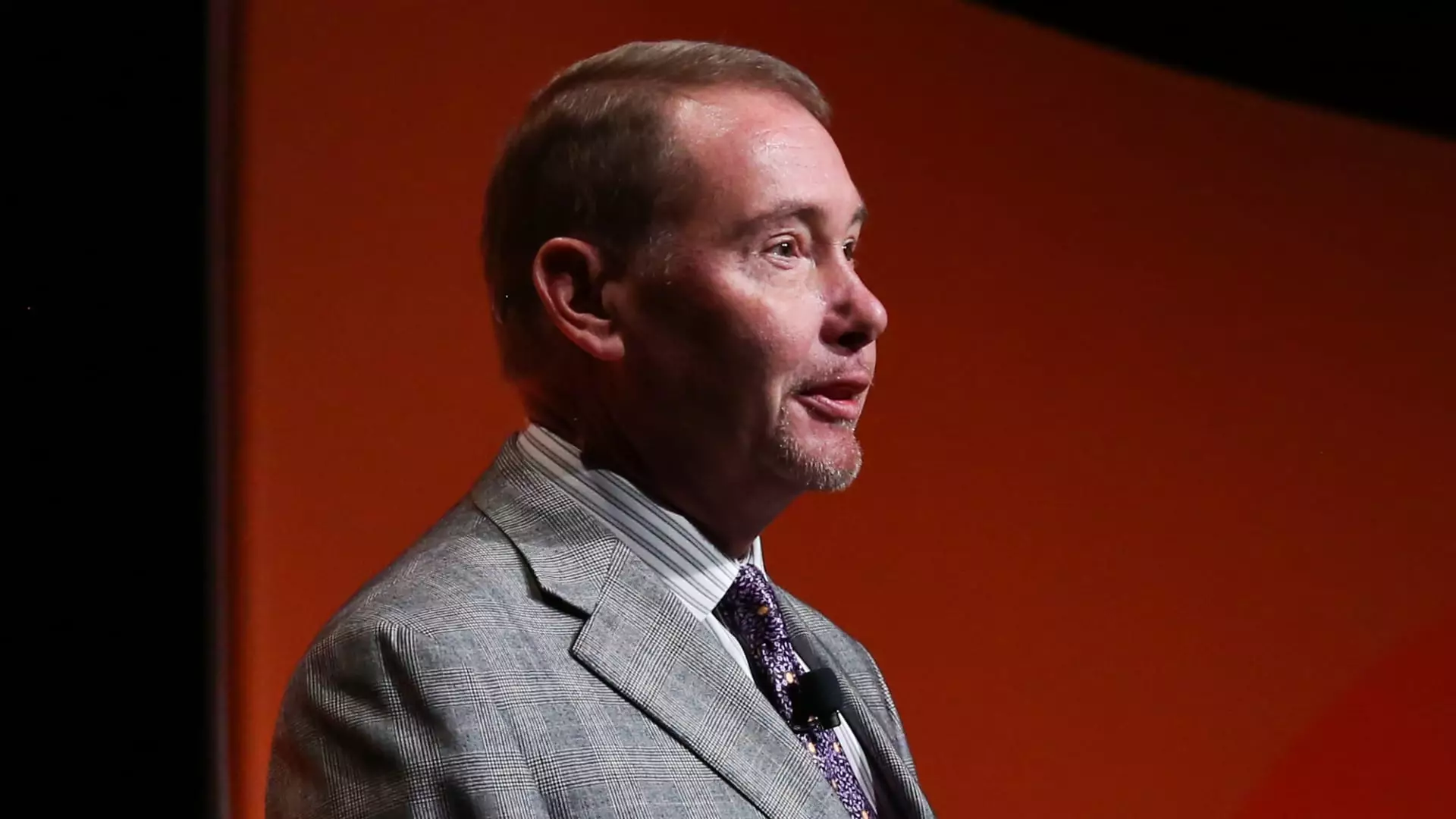Jeffrey Gundlach, the CEO of DoubleLine Capital, offers a provocative assessment of the Federal Reserve’s current monetary policy approach. In a recent investor webcast, Gundlach remarked that the Fed appears to be akin to Mr. Magoo, bumbling through a complex economic landscape while failing to see the larger picture. His criticism underscores a concern that the Federal Reserve is once again succumbing to short-term pressures, thus losing sight of strategic long-term planning necessary for sustainable economic growth and stability.
Gundlach’s concerns come at a pivotal moment, just before the release of the latest Consumer Price Index (CPI) data, which would provide critical insights into inflation trends. The freshly released CPI figures indicated a 0.4% increase for the month, leading to an annual inflation rate of 2.9%. While the core CPI, which excludes volatile food and energy prices, performed slightly below expectations, Gundlach emphasizes that the Fed must remain vigilant in its pursuit of a 2% inflation target.
The Implications of Short-Term Focus
The crux of Gundlach’s argument lies in the Federal Reserve’s reactive stance, which, according to him, seems trapped in a cycle of responding to short-term economic indicators without a robust strategic framework. He points out that the recent inflationary trends have caused a volatile shift in market expectations regarding the Fed’s future actions on rates. Initially, there was an aggressive market assumption about significant interest rate cuts; however, now there is a growing consensus that only one cut may transpire in 2025.
This shift highlights a significant dilemma faced by central banks worldwide: the art of balancing immediate economic data with broader, far-reaching monetary strategies. Gundlach’s analogy of the Fed’s erratic navigation exacerbates concerns about the central bank’s effectiveness in steering the economy toward stability. The knee-jerk reactions to inflationary signals may result in a lack of clarity and direction in monetary policy, which is detrimental to investor confidence.
The Road Ahead for the Federal Reserve
As the Federal Reserve prepares for its upcoming meetings, it faces mounting pressure to recalibrate its approach to interest rates. Following a series of interest rate cuts—totaling one full percentage point since September—the Fed’s trajectory for fiscal policy remains uncertain, particularly as market expectations have evolved. Gundlach notes the Fed’s recent alignment with market anticipations reflects a cautious strategy, but this approach may also prevent proactive engagement with looming economic threats.
The uncertainty in monetary policy often leads to confusion and hesitance among investors. Futures markets have demonstrated a strong inclination toward the Fed maintaining its current stance in January, with increased probability assigned to potential gradual rate cuts throughout the year. However, the challenge remains: can the Federal Reserve gracefully navigate this complex terrain without falling prey to the pitfalls of short-termism?
Gundlach’s insightful critique of the Federal Reserve serves as a clarion call for a reevaluation of its monetary policy philosophy. By embracing a more strategic vision, the Fed can foster economic resilience while ensuring that dynamic market conditions do not overshadow its long-term objectives. Only through a balanced and informed decision-making process can the Fed hope to maintain stability in an increasingly unpredictable economic environment.

